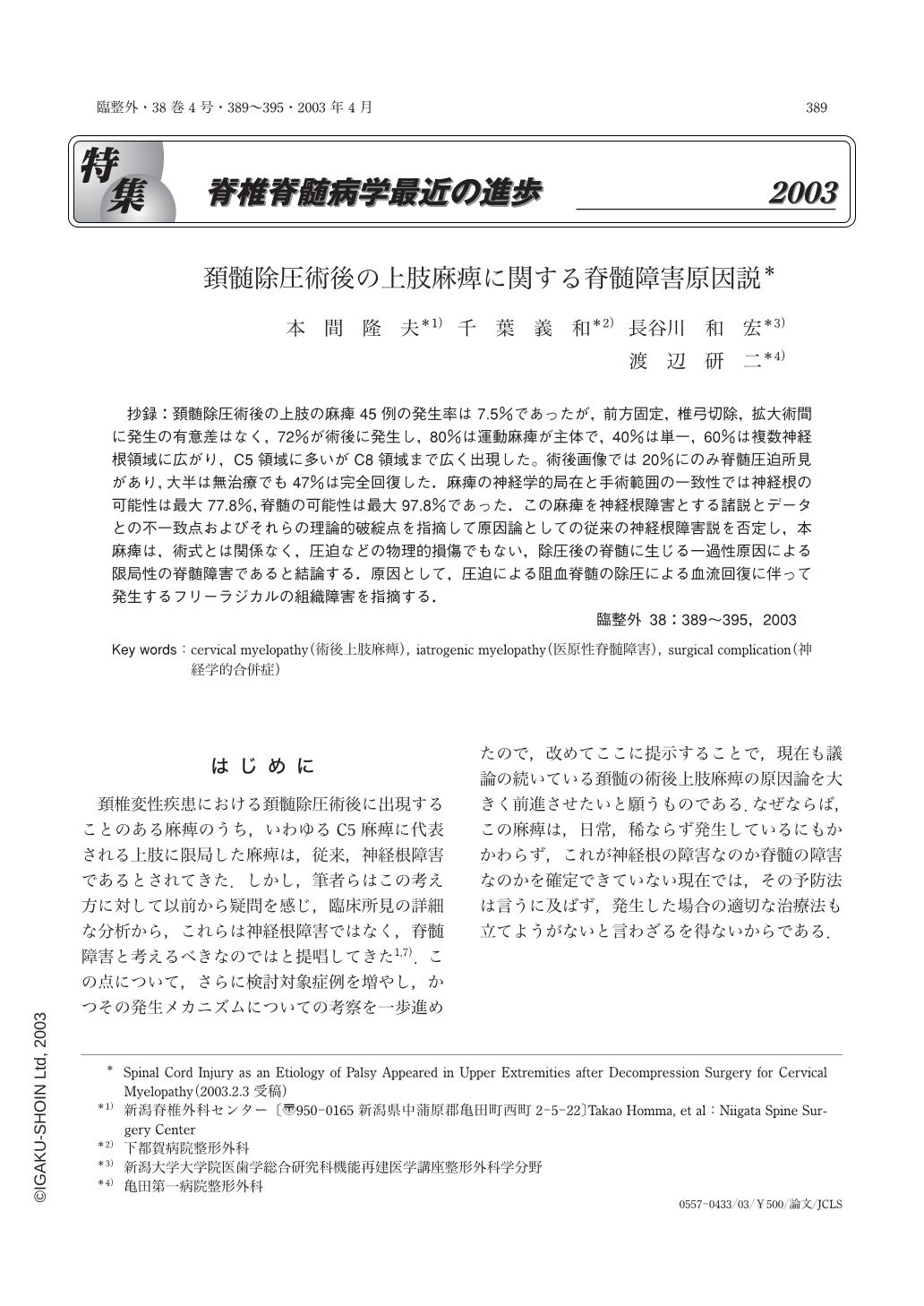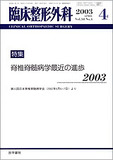Japanese
English
- 有料閲覧
- Abstract 文献概要
- 1ページ目 Look Inside
抄録:頚髄除圧術後の上肢の麻痺45例の発生率は7.5%であったが,前方固定,椎弓切除,拡大術間に発生の有意差はなく,72%が術後に発生し,80%は運動麻痺が主体で,40%は単一,60%は複数神経根領域に広がり,C5領域に多いがC8領域まで広く出現した。術後画像では20%にのみ脊髄圧迫所見があり,大半は無治療でも47%は完全回復した.麻痺の神経学的局在と手術範囲の一致性では神経根の可能性は最大77.8%,脊髄の可能性は最大97.8%であった.この麻痺を神経根障害とする諸説とデータとの不一致点およびそれらの理論的破綻点を指摘して原因論としての従来の神経根障害説を否定し,本麻痺は,術式とは関係なく,圧迫などの物理的損傷でもない,除圧後の脊髄に生じる一過性原因による限局性の脊髄障害であると結論する.原因として,圧迫による阻血脊髄の除圧による血流回復に伴って発生するフリーラジカルの組織障害を指摘する.
The 45 cases in which palsy in the upper extremities was newly detected after decompression surgery for cervical myelopathy were analyzed. Its incidence among the 598 cases operated on was 7.5%, and there were no statistically significant differences in incidence between anterior spine fusion, laminectomy, and laminoplasty. In 72% of the cases the palsy developed postoperatively, in 80% it was motor-dominant, in 40% the distribution was over a single nerve root area, and in the others it involved more than one nerve root in the C6 to C8 range. Postoperative image diagnosis revealed compression of the cord alone, and not of the root, in 20%, and 47% recovered neurologically without any treatment. Analysis from the standpoint of consistency between the neurological localization and surgical region indicated the possibility of a nerve root lesion in 77.8% and a spinal cord lesion in 97.8%. Some hypotheses about the etiology of the palsy can be ruled out by these findings. This palsy should be considered attributable to damage to the spinal cord, not to the nerve roots, by intramedullary free radicals generated as a result of reperfusion of a cord area made ischemic by compression.

Copyright © 2003, Igaku-Shoin Ltd. All rights reserved.


